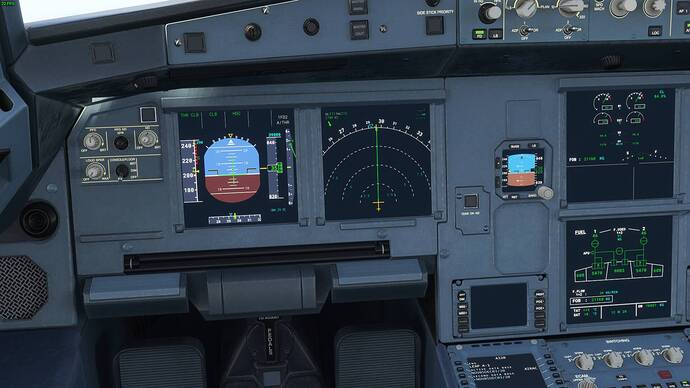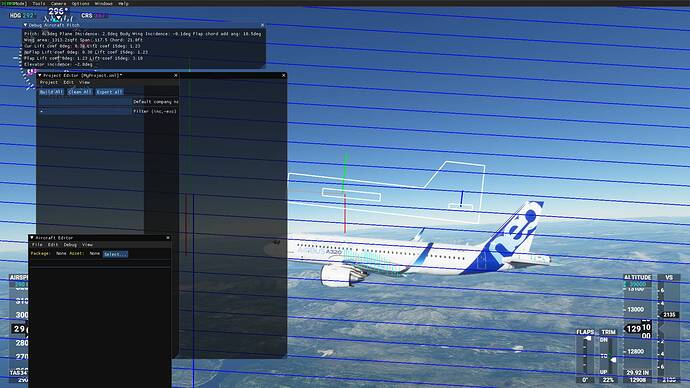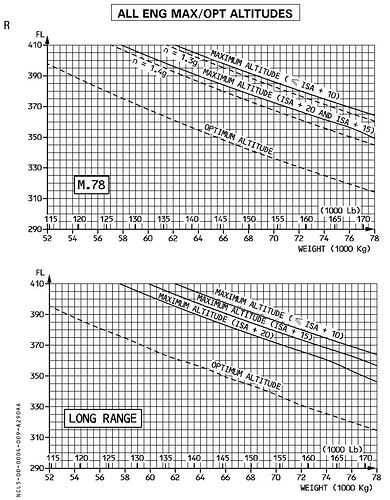Conditions used:
- CG within limits
- Weight max. TOW and 52t
- Modern flight model
- Clean configuraion
- ISA conditions
- 290 kts until speed conversion then Mach .78
- Thrust MCT
I’m sorry but the A320 is awfull. I tried take-off at max. TOW just now. Needing full sidestick to rotate to 10 degrees pitch. “S” speed above max. flap extend speed. Doesn’t look good so far…
You can see gross weight just below 79t on the ECAM, CG within limits. S speed above VFE…
Force vectors still wrong with the CG in front of the envelope, lift acts in front of the weight with an up-force on the horizontal stabilizer. This is wrong. No wonder they had to tweak the fuel consumption…
On the upside 2000 ft/min at FL150 at full weight with 290 kts in ISA, that is in accordance with the Eurocontrol aircraft performance database, although I doubt those figures are at full weight.
Now 975 ft/min passing FL240, not looking so good anymore. I found the A320 ceo has a max. ceiling of FL370 at max. weight. Lets see if it makes it that far.
Hitting absolute ceiling at FL290 after having to reduce speed to green dot to remain climbing (and hand flying because the autopilot is doing an awfull job maintaing green dot speed). To be clear not the service ceiling but the ABSOLUTE ceiling with 0 ft/min.
The Airbus A320 ceo should have a service ceiling of FL370 at 78t and ISA, the MSFS A320 doesn’t even reach optimum FL of FL315 for 78t! I’m expecting the A320 neo performance to be equal or better than the A320 ceo. The Airbus seems to significantly under-perform comparing to the performance data I could find.
Second test with weight at 52t, ISA conditions and MCT. Climb with 290 kts, then reducing to green dot speed as climb performance reaches near zero. You can see in the above tables that the Airbus must be able to reach FL410 easily with Mach .78. I’m stuck at green dot levelling out at FL370!
How does Asobo test those things before release? It is not that difficult is it? And I assume they have more data available to them than we have. Just test the extremes of the flight envelope in ISA conditions and compare with that in the published AFM. It doesn’t have to be perfect either, really hitting the benchmarks on everything, but this is the other end of the spectrum. If they would have run one test at max. TOW they would have found the S speed above VFE and the bad climb performance at least…
Funny thing is that I was comparing the TBM 930 with the published AFM recently (before the update) and I was very impressed everything to be very close to what it should be in terms of climb and cruise performance (except ITT which is completely off and the descent glide performance are *** due to missing propeller drag).


